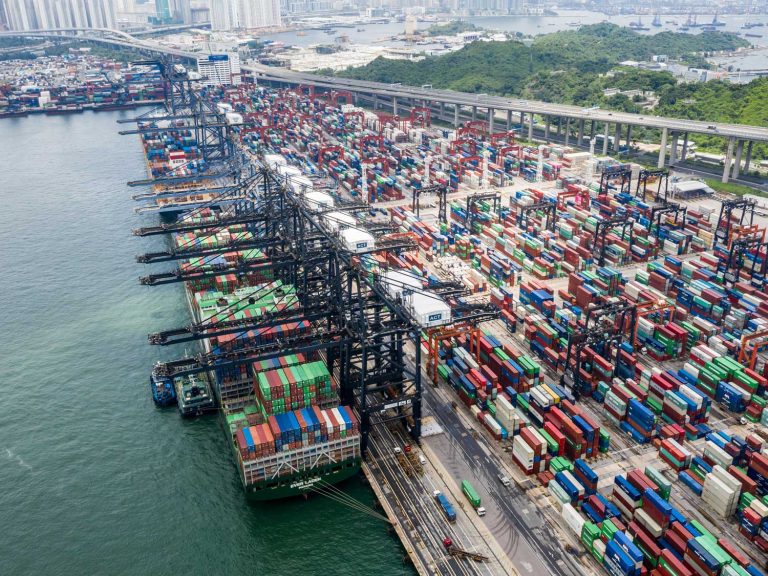
Date:
Ocean capacity and equipment challenges continue globally
Container shipping rates from China to the US and Europe continue to rise, as reduced capacity, high consumer demand and equipment shortages across China and Southeast Asia escalate.
While container freight rate increases on the transpacific trade from Asia have outstripped increases to Northern Europe over the last year – almost double on some routes – the rate level increases are driven by the same factors; market demand and available capacity supply.
May looks likely to be a record month for US imports while, at the same time, blank sailings are totalling 5-10% of weekly sailings as shipping lines struggle to deal with the aftermath of the week long Suez Canal blockage in late March.
Demand from North Europe and the UK remain strong, driving increasing volumes and the backlog for confirmed bookings is already pushing into June. This is further affecting The UK in particular, since the withdrawal from the EU Bloc and being almost considered a ‘micro-climate’ in terms of its economy and trade lane, becoming quite insular in consideration by some of the carriers who are incentivised by the larger EU volumes and related efficiencies of scale.
The 1st May general rates increase (GRI) across the majority of carriers was significant and reflects the carriers’ determination to benefit from sustained high demand and insufficient capacity.
CONTAINER PROCUREMENT: Our Fracht colleagues outline today’s container freight market. Explaining the drivers behind current developments and predicting where we’re going. Click HERE to view their report

With further rate increases anticipated on the 15th May we would urge shippers to book with us immediately and customers to continue making advance bookings at least three weeks prior to the forecast cargo ready date.
The blank sailing and equipment shortage impact of the Suez Blockage in March continues to ripple outward, with overall capacity significantly reduced since mid-April and expected to impact to the end of the month, while equipment shortages are expected to persist for the next two months, exacerbated by the numerous blank sailings.
The normally stable Transatlantic, Europe to/from North America trade, has not been immune from the continuing global supply disruption, with rates already increasing and a further GRI expected on the 1st June, with the additional possibility of new and amended surcharge adjustments.
From North America to Europe, rates are steady, though one carrier has announced a small GRI for the 1st June. Port congestion on the US East Coast and in Europe is impacting vessel-schedule integrity, which in turn is causing capacity loss, as vessels make up lost time.
There are fewer blank sailings on Asia to North Europe services, but container equipment supply is tight across Europe, with port congestion, lower vessel capacity and inland delays hindering the positioning of empty containers to the Far East.
In a more positive development, leading industry figures are convinced that the current severe equipment shortages are not due to global demand growth, but the bottleneck issues in ports and further inland tying up capacity for much longer than usual. Basically containers are in the wrong place at the wrong time, although it is anticipated this will correct itself as the market stabilises. The question is when?
The usual year-on-year comparison, they say, is meaningless as we are comparing with months impacted by the pandemic in 2020, so the 10.8% year on year global demand growth is not a true reflection of the market.
Viewed over a two-year perspective, global demand grew 6.2% in March, well in line with January and February and hence Q1 2021 has seen global demand grow 6.5% compared to Q1 2019. As an average annual growth rate this is 3.2%.
A 3.2% annual global demand growth is well in line with the long-term normal growth pattern in global container shipping, confirming we DO have enough containers, they are just not available in the areas where they are required to be loaded and shipped!
While the experts’ long-term equipment availability confidence is welcome, the current situation makes booking equipment particularly challenging, which is why we request four weeks visibility and booking window from vendors and shippers, to secure space on the vessel and get the right equipment positioned.
Global supply chains are likely to be under intense and sustained pressure for some time yet and we will continue to share with you the most important developments, so that you are informed and prepared to make critical decisions, ahead of potential issues.
Please contact Elliot Carlile or Grant Liddell to learn how we can support your supply chains, even in the most challenging market conditions.
